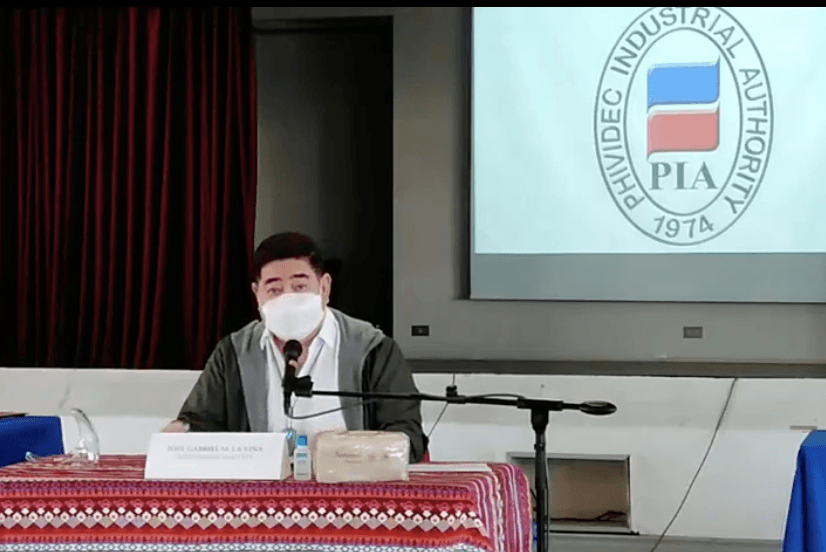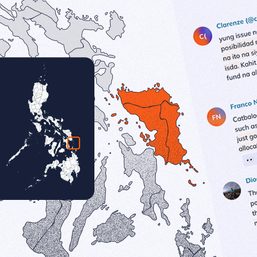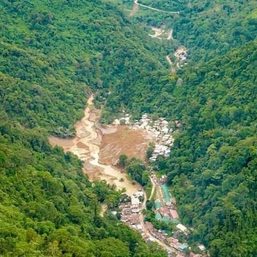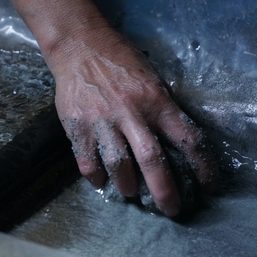SUMMARY
This is AI generated summarization, which may have errors. For context, always refer to the full article.

The state-owned Phividec Industrial Authority has ordered a halt to quarryings that it said have been eating up part of its property in Tagoloan town, Misamis Oriental, since the ’90s.
The 3,000-hectare industrial estate that stretches from the towns of Tagoloan to Villanueva has so far lost some 70 hectares as a result of unabated quarryings, according to Phividec Administrator Jose Gabriel “Pompee” La Viña.
La Viña issued a cease-and-desist order Monday against 5 groups behind the quarryings and barred them from the Phividec estate, a move which he anticipates would result in litigation given that it challenges local government authority on the territory being administered by Phividec. He said the move was authorized by the Phividec board.
The quarryings, along a river in Tagoloan, were done with the consent of the provincial government of Misamis Oriental.
Phividec identified those supposedly given capitol permits as Nicomedes Achas, Chique Cosin, Manuel Sukarno Alvarez, Salvador Fernandez, and Carlos Poras.
La Viña said results of a 2019 survey showed that the quarryings made the river curve and snake through part of Phividec’s property, endangering families living near the riverbank.
To make matters worse, the affected area is near an earthquake fault line, said La Viña.
It’s a disaster waiting to happen, and unless the quarryings are stopped, the Misamis Oriental town and neighboring areas would likely see an environmental disaster similar to the Typhoon Sendong-spawned floods that killed thousands, flattened communities, and brought Cagayan de Oro and Iligan cities down to their knees in December 2011, said La Viña.
Sendong, the worst environmental disaster in Cagayan de Oro in recent years, redefined local politics, loosened the grip of the then-local political kingpin and mayor Vicente Emano, and cost him a reelection in 2013. He never recovered politically, and died of natural causes while seeking Cagayan de Oro’s vice mayoral post under La Viña, who challenged the reelection bid of Mayor Oscar Moreno in 2019. The La Viña ticket failed in its 2019 election campaign.
The Emanos
Tagoloan is the first Misamis Oriental town east of Cagayan de Oro City. It is the hometown of Vicente’s only son Yevgeny Vincente, who is serving his third and last office term as the province’s governor. The elder Emano served as the province’s leader throughout the ’90s until his 1998 election as Cagayan de Oro mayor. The two Emanos launched their political careers in Tagoloan where they served as town mayor on separate occasions.
The elder Emano and Phividec had clashed in the ’80s and the ’90s over questions on jurisdiction and local government authority over the 3,000-hectare industrial estate being administered by Phividec, and La Viña’s cease-and-desist order this week could open old wounds.
Although given permission by the capitol, La Viña asserted that the quarry operators still needed to seek Phividec’s go-ahead.
The capitol confirmed it has given quarry permits covering areas in the villages of Sta. Ana and Mohon in Tagoloan, but added that it felt slighted by Phividec’s move, which it found to be “discourteous,” said Gerardo Sabal III, a provincial board member who chairs the legislature’s environment committee.
To begin with, he said, it has yet to be ascertained whether or not La Viña’s claim that the river curved towards Phividec property is a fact.
Sabal said he was aware that 4 quarry permits were issued by Governor Emano based on the recommendation of the local mining board chaired by an official of the Department of Environment and Natural Resources (DENR), a capitol outsider. He said Emano, who sits as vice chairman of the mining board, issued the permits on behalf of the capitol based on sketches and documents required by the government.
“No one gets a permit without compliance,” he said.
Sabal said the provincial board would look into La Viña’s allegations and see if the river really curved towards the industrial estate and ate up 7 hectares of the property it administers.
“But there was no inter-agency courtesy in this case; there was no coordination whatsoever,” he said.
‘No one owns the river’
Another provincial board member, Dexter Yasay, frowned over the Phividec’s cease-and-desist order and its alleged move to bar public access to a road in Tagoloan.
“First, no one owns the river and so, it cannot be Phividec property,” Yasay pointed out. “Second, if someone squats on your property, wouldn’t you be calling authorities for help, or go to court, instead of putting the law into your own hands? The Phividec move is something that I find confusing. I cannot make any sense out of it.”
Yasay said the quarry permits were given by Emano after government requirements were complied with, and after noting that Tagoloan communities – from the barangay up to the municipal levels – “interposed no objection.”
“The barangays and their chairmen are okay with it; the town council is okay with it; the town mayor is okay with it. It looks like only Pompee (La Vina) has a problem with it,” said Yasay, pointing out that the process of securing the capitol’s quarry permits required the green light of the environment department.
The provincial board’s environment committee would start an official inquiry into La Viña’s claims and his February 22 cease-and-desist order on March 3. – Rappler.com
Add a comment
How does this make you feel?



![[ANALYSIS] Trading irregularity in Abra Mining: Why the inaction?](https://www.rappler.com/tachyon/2024/03/tl-mining-trading-irregularities-03082024.jpg?resize=257%2C257&crop_strategy=attention)


There are no comments yet. Add your comment to start the conversation.